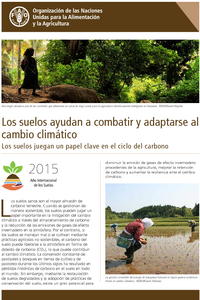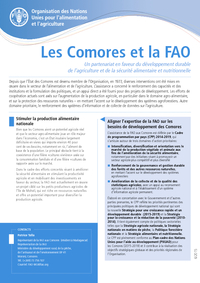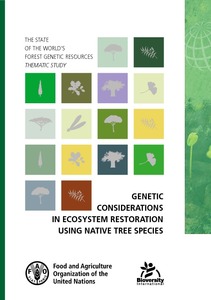Focal point
Location
The Food and Agriculture Organization of the United Nations leads international efforts to defeat hunger. Serving both developed and developing countries, FAO acts as a neutral forum where all nations meet as equals to negotiate agreements and debate policy. FAO is also a source of knowledge and information. We help developing countries and countries in transition modernize and improve agriculture, forestry and fisheries practices and ensure good nutrition for all. Since our founding in 1945, we have focused special attention on developing rural areas, home to 70 percent of the world's poor and hungry people.
Members:
Resources
Displaying 1826 - 1830 of 5074Los suelos ayudan a combatir y adaptarse al cambio climático
Los suelos sanos son el mayor almacén de carbono terrestre. Cuando se gestionan de manera sostenible, los suelos pueden jugar un papel importante en la mitigación del cambio climático a través del almacenamiento de carbono y la reducción de las emisiones de gases de efecto invernadero en la atmósfera.
Les Comores et la FAO
Depuis que l’État des Comores est devenu membre de l’Organisation, en 1977, diverses interventions ont été mises en oeuvre dans le secteur de l’alimentation et de l’agriculture. L’assistance a concerné le renforcement des capacités et des institutions et la formulation des politiques, et un appui direct a été fourni pour des projets de développement.
Genetic considerations in ecosystem restoration using native tree species. State of the World’s Forest Genetic Resources – Thematic Study.
There is renewed interest in the use of native tree species in ecosystem restoration for their biodiversity benefits. Growing native tree species in production systems (e.g. plantation forests and subsistence agriculture) can also ensure landscape functionality and support for human livelihoods. Achieving these full benefits requires consideration of genetic aspects that are often neglected, such as suitability of germplasm to the site, quality and quantity of the genetic pool used and regeneration potential.
Genetic considerations in ecosystem restoration using native tree species. State of the World’s Forest Genetic Resources – Thematic Study.
There is renewed interest in the use of native tree species in ecosystem restoration for their biodiversity benefits. Growing native tree species in production systems (e.g. plantation forests and subsistence agriculture) can also ensure landscape functionality and support for human livelihoods. Achieving these full benefits requires consideration of genetic aspects that are often neglected, such as suitability of germplasm to the site, quality and quantity of the genetic pool used and regeneration potential.










